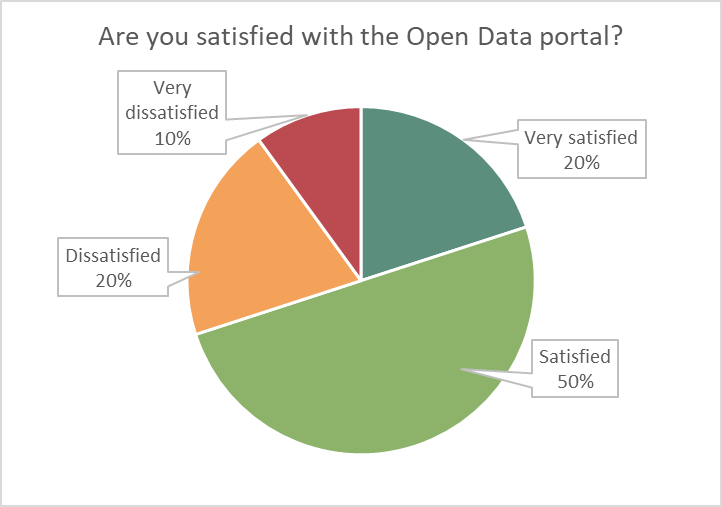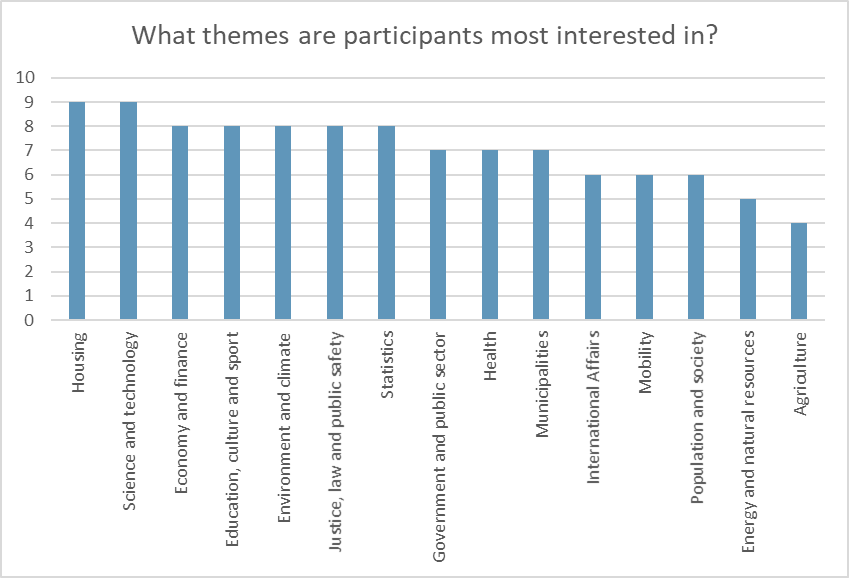Beyond satisfaction: Unveiling the desires of our users
Published on November 17, 2023
The survey launched this autumn on the uses of the Open Data portal reveals that expectations are still not being met in many areas.

(c) SIP / Nicolas Bouvy
Twenty Internet users answered to the questionnaire on our portal.
70% said they were satisfied or very satisfied with the Open data portal in general. "It's beautiful, it's clean, it's clear", said one of the survey participants.

Among the complaints mentioned, the following were repeatedly cited
- the difficulty or impossibility of re-exploiting data published in non-tabular formats, such as PDF;
- data that does not get regular updates.
Similarly, one user finds it difficult to locate the most relevant and up-to-date data. In his view, the availability of real-time data is not at the level of other Open data platforms.
Of all survey respondents, more than half visit the portal once a month or more (20% once a month, 30% several times a month, 5% every day and 5% several times a day). 40% visit less regularly, that is, less than once a month.
Housing, science and technology: where data is most lacking
Among the subjects considered insufficiently supplied with data, housing ranks first, ex-aequo with science and technology issues.
They are followed by data relating to justice; environment; education, culture and sport; law and public safety; economy and finance. There is also a more general demand for statistics.
Interest is still high in topics relating to local authorities; health; government and public sector.
On the other hand, there is less interest in mobility issues, which rank alongside international affairs and population and society.
Energy and, last but not least, agriculture close the list.

A majority of respondents (60%) have already reused data published on the Open data portal, and 40% of them have promoted it on the portal.
Finally, more than one in two participants specified which data currently non-existent or insufficiently presented on the portal would be useful to them. The proposals ranged from the very specific to the more vague:
- Multimodal mobility flows and more recent mobility data;
- More comparative data for the Greater Region, to put figures from the German, Belgian, French and Luxembourg administrations into perspective;
- Results of sanitary inspections of restaurants;
- Updated, geo-referenced lists of HORESCAs, childcare facilities, doctors and veterinarians;
- Data on political life;
- More cultural information;
- More information from the Business registers;
- Statistics on complaints filed and their categorization;
- Crime statistics;
- Links to research projects;
- Statistics on the number and types of disabilities;
- Updated statistics on aircraft noise;
- More insights into the labor market;
- Average and median salaries by industry; also, the difference in male/female salaries by industry;
- The types of cases handled by the tribunal and their outcome;
- Finally, the results of this and previous similar studies.
In addition to the request for data, one user lamented the lack of APIs currently available on the portal.
Responses were received from September 13 to November 1, 2023.
A strategy for new momentum
Although the small number of participants means that no definitive conclusions can be drawn, it is undeniable that many data, inventories and documents are still missing: the efforts made over the past few years to raise awareness among public-sector players and encourage them to "liberate" their data must continue.
Even so, some of the results raise questions: housing, for example, comes on top of the list of data deemed insufficiently documented. However, the datasets from the Observatoire de l'habitat are far from negligible, and meets an often-requested requirement: its data is regularly updated. More specific examples of where data is lacking would have helped us to better pinpoint the problem.
Finally, Luxembourg's Open data strategy, published at the end of 2022, focuses on high-value data, making the following areas priority themes:
- geospatial data;
- Earth observation and environmental data;
- meteorological data;
- statistical data;
- mobility data;
- business and business ownership data.
Real-time data, also solicited as part of the questionnaire, are not forgotten and are mentioned as part of this strategy.
The data used for this analysis is available in this dataset.
